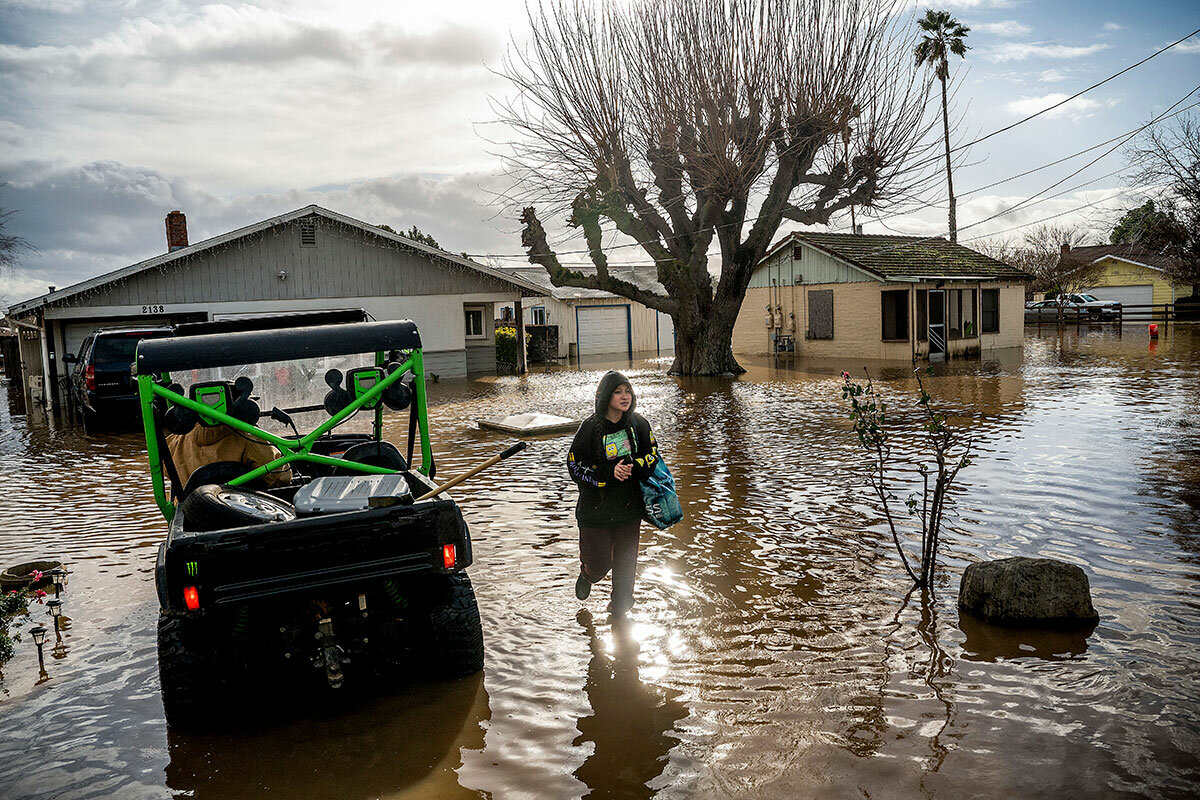California, risky ‘rivers,’ and the urgency of storm safety

 Mark Trumbull
Mark Trumbull
Perhaps like many people, when I think of the word “river” I haven’t usually associated it with the sky. Now it’s quite possible we all will.
What scientists call atmospheric rivers, colossal loads of airborne moisture traveling generally at low altitudes until they become rain, are behind the floods that are making safety for Californians a big issue this week.
These aren’t a new feature of the West Coast climate. But what’s notable in the past couple of weeks is the frequency and magnitude of these airborne rivers, says Julie Kalansky, a researcher at the Center for Western Weather and Water Extremes at the University of California, San Diego’s Scripps Institution of Oceanography.
Flooding and high waves have swept from Northern California to the Los Angeles area. Many coastal and mountain zones have seen more than 14 inches of rain in the past two weeks, saturating the landscape and prompting both precautionary evacuations and courageous rescues (as well as some 17 deaths).
It’s making very clear that these rivers aren’t small. According to one estimate, atmospheric rivers over the Northeast Pacific Ocean generally transport water equal to about 27 Mississippi Rivers.
The strong consensus among atmospheric scientists is that climate change is making the patterns more intense, says Dr. Kalansky, who is operations manager at the center.
“As the atmosphere warms, it is able to hold more water,” she says. “The big [atmospheric rivers] are expected to become even more extreme.”
This doesn’t mean every winter will see deluges like this one. But researchers do predict that more of California’s water in the future will come from these rivers, and less from other kinds of storms. The state’s already-large swings between wet and dry may increase.
Communities will be called on to adapt to stay safe. Already, California has begun investing more in forecasting these hard-to-predict storms.
Another priority for the state: better reservoir management. The goal is capturing needed water when it comes, while also being mindful of how over-full reservoirs can make it harder to manage flood risks.
When you think of California’s future, remember: Some rivers run through it.



